Are you gearing up for a cyber security analyst interview and want to ensure you’re fully prepared? Look no further! LufSec, your trusted guide in the cyber security realm, brings you an exclusive list of 50 must-know interview questions and answers to set you up for success. Whether you’re a newbie or a seasoned pro, these insights will give you the edge to shine in your interview.
- What is a VPN, and why is it important?
- A VPN, or Virtual Private Network, creates a secure, encrypted connection crucial for safeguarding data transmitted over the internet, ensuring privacy and security.
- Explain the concept of a firewall and its role in cybersecurity.
- A firewall monitors and controls incoming and outgoing network traffic based on predetermined security rules, acting as a barrier between secure internal networks and untrusted external networks.
- What is the difference between IDS and IPS?
- An Intrusion Detection System (IDS) detects potential security breaches, while an Intrusion Prevention System (IPS) actively blocks and mitigates those threats.
- Define encryption and the types of encryption.
- Encryption converts data into a coded format to prevent unauthorized access. Symmetric encryption uses one key for encryption and decryption, while asymmetric encryption uses a public-private key pair.
- Describe the role of encryption in cybersecurity.
- Encryption protects data confidentiality, ensures data integrity, and verifies authentication, securing information during transmission and storage.
- What is a security risk assessment, and why is it important?
- It identifies, evaluates, and implements critical security controls for recognizing vulnerabilities and preventing unauthorized access.
- What are the main differences between symmetric and asymmetric encryption?
- Symmetric encryption uses one key for encryption and decryption, whereas asymmetric encryption uses a public key for encryption and a private key for decryption.
- Explain the difference between a virus and a worm.
- A virus requires user interaction to spread, while a worm is self-replicating and spreads independently, exploiting network vulnerabilities.
- What is phishing, and how can it be prevented?
- Phishing is a deceptive attempt to obtain sensitive information, preventable through user education, spam filters, and robust authentication methods.
- What is a DDoS attack, and how can it be mitigated?
- A Distributed Denial of Service attack overwhelms a system with traffic to cause downtime, mitigated by anti-DDoS tools, rate limiting, and redundant network resources.
- What is social engineering, and provide an example.
- It’s the manipulation to obtain confidential information. An example is baiting, where attackers use false promises to pique a victim’s greed or curiosity.
- Describe what a honeypot in cybersecurity is.
- A honeypot is a decoy system designed to attract and trap attackers, used to study attack strategies and strengthen security.
- Explain the concept of ‘zero trust’ in cybersecurity.
- Zero trust is a security model that requires all users, whether inside or outside the organization’s network, to be authenticated and authorized before accessing data.
- What is the principle of least privilege, and why is it important?
- It ensures users have only the access necessary to perform their tasks, minimizing the potential for unauthorized access or damage.
- What is a man-in-the-middle attack, and how can it be prevented?
- It’s an attack where the perpetrator intercepts communication between two parties to steal or manipulate data, which is preventable using encryption and secure protocols.
- How do you differentiate between risk, threat, and vulnerability in cybersecurity?
- Risk is the potential for damage when a threat exploits a vulnerability. A threat is a potential cause of an incident, while a vulnerability is a weakness that can be exploited.
- What is the function of a Security Operations Center (SOC)?
- A SOC monitors, detects, analyzes, and responds to cybersecurity incidents, using integrated security solutions to protect against threats.
- Discuss the concept of ‘defense in depth’ in cybersecurity.
- It’s a layered security approach that uses multiple security measures to protect information, ensuring that if one defense layer fails, others still provide protection.
- What is the significance of an incident response plan in cybersecurity?
- It provides a structured approach for handling security incidents, ensuring effective and timely responses to minimize impact and restore operations.
- Explain what a botnet is and why it’s a concern.
- A botnet is a network of infected computers controlled by an attacker, used for large-scale attacks or fraud, posing significant security and operational risks.
- How do you ensure data confidentiality, integrity, and availability?
- By implementing encryption for confidentiality, checksums for integrity, backups, and redundancy for availability.
- What are the common types of cyber attacks?
- They include malware, phishing, ransomware, man-in-the-middle attacks, and SQL injection, each with unique tactics and impacts.
- What is two-factor authentication, and why is it important?
- It’s a security process where users provide two different authentication factors, significantly enhancing security by adding an extra layer of verification.
- Describe the process of a penetration test.
- Penetration testing simulates an attack on a system to identify vulnerabilities and assess the effectiveness of security measures involving planning, surveillance, exploitation, and reporting.
- What is the difference between vulnerability scanning and penetration testing?
- Vulnerability scanning is an automated process to identify potential vulnerabilities, while penetration testing is a manual, in-depth examination to exploit weaknesses.
- How do you handle a detected intrusion?
- Follow the incident response plan: isolate the system, analyze the breach, contain and eradicate the threat, recover the system, and document the incident.
- What are the common indicators of a compromised system?
- Indicators include unusual system behavior, unexpected software installations, excessive network traffic, and unauthorized user activities.
- How can organizations prevent data leaks?
- Organizations can prevent unauthorized data access and leaks through data encryption, access controls, employee training, and monitoring and controlling data transfer.
- What is the importance of asset management in cybersecurity?
- It helps identify and manage organizational assets, ensuring security controls are applied, and vulnerabilities are managed across all assets.
- Explain what is meant by ‘chain of custody’ in digital forensics.
- It refers to the documentation that records evidence handling, ensuring its integrity and authenticity from collection to presentation in court.
- How do you ensure secure coding practices?
- I adhere to coding standards, conduct code reviews, use automated code analysis tools, and implement security testing throughout the development lifecycle.
- What is an SSL certificate, and why is it important?
- An SSL certificate authenticates a website’s identity and enables an encrypted connection, crucial for ensuring data security and user trust online.
- What is digital forensics, and what are its key stages?
- Digital forensics involves collecting and analyzing electronic data to recover and investigate material found in digital devices, including collection, examination, analysis, and reporting.
- What are the different types of security models, and how do they differ?
- Security models like DAC, MAC, and RBAC differ in how they manage access and control; DAC allows owners to set policies, MAC enforces policies based on classification, and RBAC assigns rights based on roles.
- How do you manage passwords securely in an organization?
- Organizations can secure user credentials effectively by enforcing strong password policies, using password managers, and implementing regular changes and multi-factor authentication.
- What is patch management, and why is it important?
- Patch management is managing software and systems updates, crucial for fixing vulnerabilities, enhancing functionality, and protecting against threats.
- What are the critical elements of an effective cybersecurity policy?
- They include defining scope, identifying assets, assessing risks, defining control frameworks, incident response planning, and establishing roles and responsibilities.
- What is SIEM, and what are its functions?
- Security Information and Event Management (SIEM) aggregates and analyzes log data across the organization, providing real-time analysis, event correlation, and incident response.
- How would you ensure compliance with data protection laws and regulations?
- By regularly reviewing and updating policies, conducting audits, training employees, and implementing robust data protection and privacy measures.
- Explain what is meant by ‘threat intelligence’ in cybersecurity.
- Threat intelligence involves collecting and analyzing information about emerging or existing threats to help organizations prepare, prevent, and identify potential security risks.
- What role does artificial intelligence play in cybersecurity?
- AI aids in detecting and responding to threats by analyzing large volumes of data for anomalies, enhancing the efficiency and effectiveness of cybersecurity measures.
- Describe the concept of ‘security by design.’
- It involves integrating security measures from the outset of system design and development, ensuring that security is a foundational component, not an afterthought.
- What is cross-site scripting (XSS), and how can it be prevented?
- XSS is a vulnerability allowing attackers to inject malicious scripts into web pages viewed by users. It can be prevented by validating and sanitizing user inputs and implementing secure coding practices.
- How do you approach securing a new network?
- Begin with a risk assessment, secure endpoints, implement network segmentation, enforce access controls, monitor traffic, and continuously evaluate for vulnerabilities.
- What is a security audit, and why is it critical?
- A security audit systematically evaluates an organization’s information security measures, which are critical for identifying weaknesses and ensuring compliance with industry standards and regulations.
- How do you differentiate between an incident, an event, and an alert in cybersecurity?
- An event is any observable occurrence in a system or network, an incident is a security event that compromises business operations, and an alert is a notification about a potential security issue.
- What are the cybersecurity metrics an analyst should track?
- Analysts should track metrics like the number of incidents, time to detect and respond, patching cadence, user awareness levels, and the effectiveness of the security infrastructure.
- What are the best practices for incident response in cybersecurity?
- Best practices include having a predefined response plan, regular training and simulations, clear communication channels, and thorough documentation and analysis post-incident.
- How do you assess the security of third-party vendors?
- Assessments include evaluating their security policies, compliance standards, data handling practices, and incident response capabilities and conducting regular audits and security reviews.
- What is the role of compliance in cybersecurity?
- Compliance ensures that organizations adhere to laws, regulations, and guidelines designed to protect data integrity, confidentiality, and availability, reducing the risk of data breaches and associated penalties.

